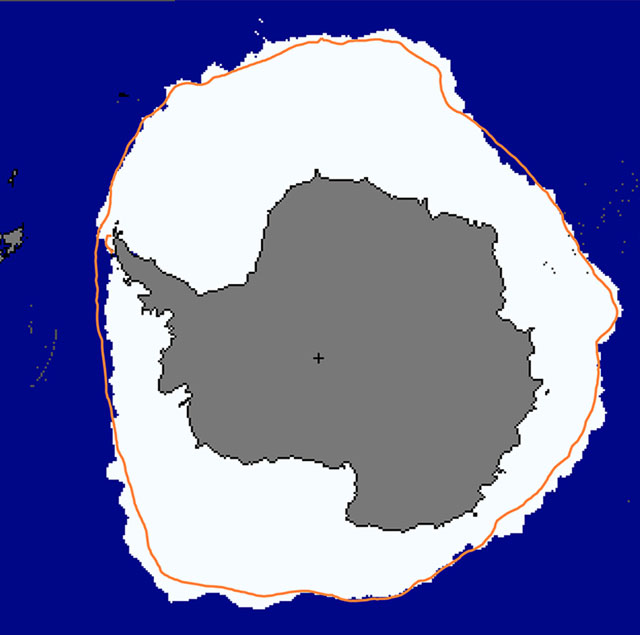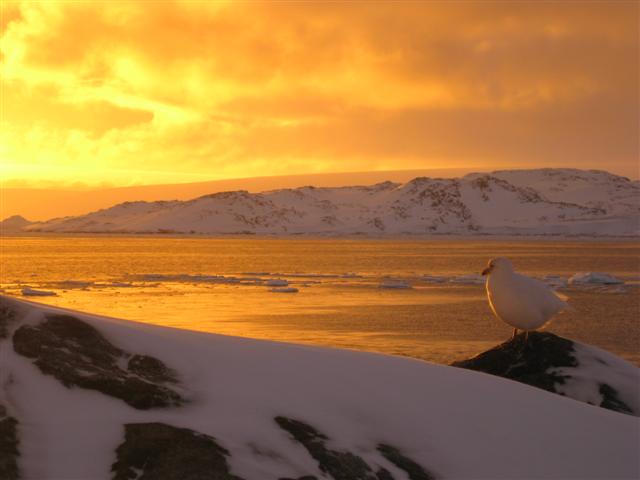|
Iced overAntarctic sea ice grows to record extent while Arctic continues to shrinkPosted October 12, 2012
While the world’s attention was focused on the record low sea ice
The sea ice around Antarctica swelled to 19.44 square kilometers on Sept. 26, more than doubling the size of the continent during the winter. The September 2012 monthly average was also a record high at 19.39 million square kilometers, slightly higher than the previous record in 2006.
Scientists largely attribute the increase in Antarctic sea ice extent to stronger circumpolar winds, which blow the sea ice outward, increasing extent, according to a press release

Photo Credit: NSIDC
Antarctic sea ice extent for Sept. 26, 2012 was 19.44 million square kilometers. The orange line shows the 1979 to 2000 median extent for that day of the year. The black cross indicates the geographic South Pole.
“Antarctica’s changes — in winter, in the sea ice — are due more to wind than to warmth, explained NSIDC scientist Ted Scambos
The exception to the trend has been sea ice around the western side of the Antarctic Peninsula, where duration and extent have decreased signficantly in recent decades. [See a more detailed analysis of the Arctic and Antarctic sea ice trends from NSIDC here
Meanwhile, sea ice covering the Arctic Ocean fell to the lowest extent in the satellite record, which began in 1979. Arctic sea ice extent reached its lowest point on Sept. 16, when sea ice extent dropped to 3.41 million square kilometers. Averaged over the month of September, ice extent was 3.61 million square kilometers.
That placed 2012 as the lowest ice extent for both the daily minimum extent and the monthly average. Ice extent was 3.29 million square kilometers below the 1979 to 2000 average.
The 2012 ice melt occurred without the unusual weather conditions that contributed to the extreme melt of 2007. In 2007, winds and weather patterns helped melt large expanses of ice.
“This probably reflects loss of multi-year ice in the Arctic, as well as other factors that are making the ice more vulnerable,” said NSIDC scientist Walt Meier
NSIDC Director Mark Serreze
Climate models have suggested that the Arctic could lose almost all of its summer ice cover by 2100, but in recent years, ice extent has declined faster than the models predicted, according to NSIDC.
“The big summer ice loss in 2011 set us up for another big melt year in 2012,” Serreze said. “We may be looking at an Arctic Ocean essentially free of summer ice only a few decades from now.”
|



For USAP Participants |
For The Public |
For Researchers and EducatorsContact UsU.S. National Science FoundationOffice of Polar Programs Geosciences Directorate 2415 Eisenhower Avenue, Suite W7100 Alexandria, VA 22314 Sign up for the NSF Office of Polar Programs newsletter and events. Feedback Form |


